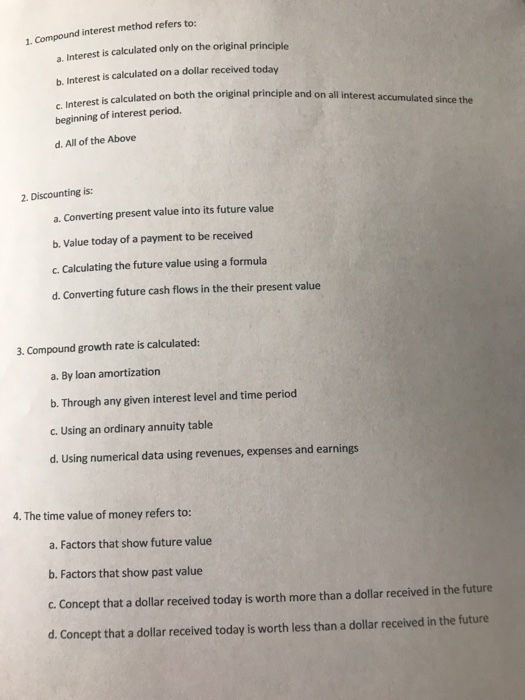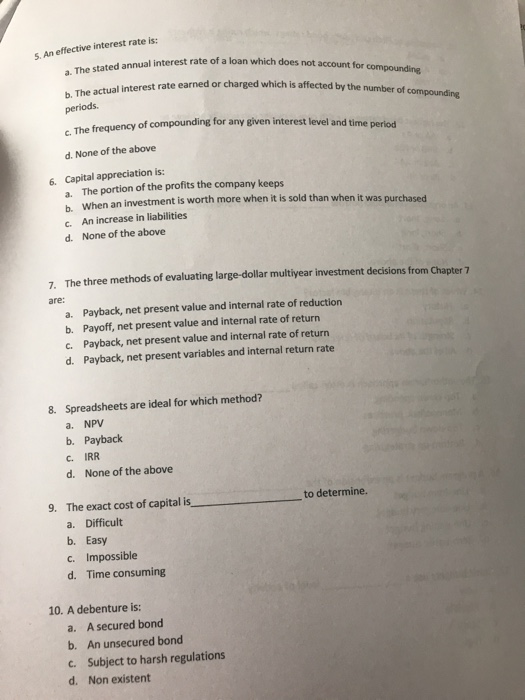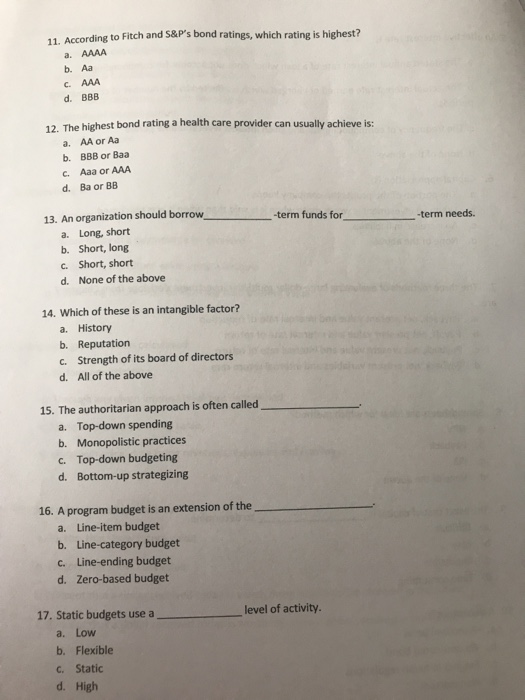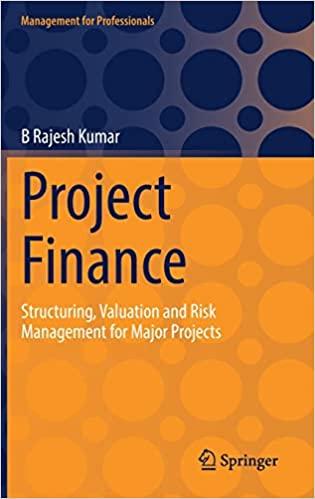1. Compound interest method refers to: Interest is calculated only on the original principle b. Interest is calculated on a dollar received today the original principle and on all interest accumulated since the Interest is calculated on both the original principle and on all interes beginning of interest period. d. All of the Above 2. Discounting is: a. Converting present value into its future value b. Value today of a payment to be received c. Calculating the future value using a formula d. Converting future cash flows in the their present value 3. Compound growth rate is calculated: a. By loan amortization b. Through any given interest level and time period c. Using an ordinary annuity table d. Using numerical data using revenues, expenses and earnings 4. The time value of money refers to: a. Factors that show future value b. Factors that show past value c. Concept that a dollar received today is worth more than a dollar received in the future d. Concept that a dollar received today is worth less than a dollar received in the future 5. An effective interest rate is: fa loan which does not account for compounding a. The sta The stated annual interest rate of a loan which does not account rest rate earned or charged which is affected by the number of compoundine b. The actual interest rate earned or periods. requency of compounding for any given interest level and time period d. None of the above 6. Capital appreciation is: a. The portion of the profits the company keeps h when an investment is worth more when it is sold than when it was purchased cAn increase in liabilities d. None of the above The three methods of evaluating large-dollar multiyear investment decisions from Chapter 7 are: a. Payback, net present value and internal rate of reduction b. Payoff, net present value and internal rate of return c. Payback, net present value and internal rate of return d. Payback, net present variables and internal return rate 8. Spreadsheets are ideal for which method? a. NPV b. Payback C. IRR d. None of the above to determine. 9. The exact cost of capital is a. Difficult b. Easy c. Impossible d. Time consuming 10. A debenture is: a. A secured bond b. An unsecured bond c. Subject to harsh regulations d. Non existent 11. According to Fitch and S&P's bond ratings, which rating is highest? a. AAAA b. Aa c. AAA d. BBB 12. The highest bond rating a health care provider can usually achieve is: a. AA or Aa b. BBB or Baa c. Aaa or AAA d. Ba or BB -term funds for -term needs. 13. An organization should borrow a. Long, short b. Short, long C. Short, short d. None of the above 14. Which of these is an intangible factor? a. History b. Reputation C. Strength of its board of directors d. All of the above 15. The authoritarian approach is often called a. Top-down spending b. Monopolistic practices c. Top-down budgeting d. Bottom-up strategizing 16. A program budget is an extension of the a. Line-item budget b. Line-category budget C. Line-ending budget d. Zero-based budget level of activity. 17. Static budgets use a a. Low b. Flexible C. Static d. High for the year. 18. A capital budget summarizes the major a. Costs b. Income c. Variances d. Purchases










